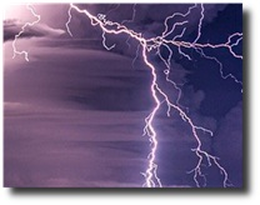I remember as a kid, showing someone a blank piece of paper and telling them it was a picture of a polar bear in a snowstorm! Unfortunately for those who know me, my sense of humor hasn’t changed a whole lot! What does this have to do with black holes? I’m glad you asked.
You may have heard recently that scientists have the first-ever picture of a black hole. This was announced just two months ago (April 2019).
So, what exactly is a black hole? We hear about them in sci-fi movies and wonder if they actually exist or are just useful for entertainment and imagination. Well, as far as we know, they actually do exist. They were first proposed about 200 years ago by Pierre Laplace, a French astronomer. If his name sounds familiar, you may be a math geek, since he pioneered something called the “Laplace transform,” commonly used in mathematical physics. Before I have nightmares again about my classes in college, I’ll quickly move on! Laplace logically deduced that when a star consumes all of its fuel, it will collapse in on itself, because there will no longer be enough energy to counteract the gravitational pull of its mass towards its center. So, because nothing is pushing out, everything comes in, suddenly and very violently!
A “stellar black hole” is formed when a star at least 25 times larger than our sun collapses, having consumed most of its fuel. When stars this large explode, it’s called a supernova and they can temporarily shine brighter than an entire galaxy containing billions of stars! Supermassive black holes are a bit different and less is known about their origin, but they are believed to be at the center of galaxies, including our own Milky Way galaxy. The basic concept is that the mass density of the collapsed star is so great that the associated gravitational pull will not allow anything to escape, not even light! However, if no light is emitted, then you can’t actually see it. So how do we see a black hole? We don’t, really. What we see is the photon sphere around the hole. More about that in a minute. (Note: The graphic at the top of this article is the actual photo that was taken of a black hole. The graphic later on in this article just an artist rendition for illustrative purposes.)
Here’s the basic structure of a black hole.
All the matter is at the very center of the black hole. Some say that region is “infinitely dense” and they call it a singularity. This is supposedly where the laws of physics as we know them cease to operate. This is all very highly theoretical, even though black holes probably do actually exist.
The boundary at which all objects will be irresistibly pulled into the black hole is called the “event horizon.” The swirling light around the outside is where photons, which normally travel in a straight line, are curved in their motions, giving off the light we observe (i.e., the “photon sphere”).
Here’s where all of this relates to the general theme of our “Question of the Month” articles. Many have mistakenly been led to believe that the discovery of a black hole is verification or proof of the Big Bang and subsequently poses challenges to the Bible.
This is not further proof of the Big Bang. In fact, some have suggested the discovery of black holes replaces the Big Bang theory. A 2018 article entitled “There Was No Big Bang—A Black Hole Created Our Universe, Scientists Claim” states the Big Bang may just be an illusion, and the universe really started from a black hole, which itself came from a star from a 4-dimensional universe! Here’s an interesting statement from that article:
“We’ve seen singularities in our universe at the hearts of black holes, and observed that most of the laws of physics start to unravel around them.”
Just a few brief comments. First of all, scientists haven’t seen singularities in our universe. They theorize their existence, but they haven’t seen them and can’t possibly see them! Second, they have not observed that most of the laws of physics breakdown around black holes. Again, they simply theorize that if all of their other guesses are correct, the laws of physics would be violated if there really was something such as a singularity. My main point is that we need to be more discerning when we read the scientific literature. The general public is usually given the impression that scientists have discovered or proven a lot more than they actually have.
You may be familiar with the Large Hadron Collider, or at least remember hearing about it. It is the world’s largest and most powerful particle accelerator and is located near Geneva, Switzerland. Its primary focus is to test various predictions of different theories of particle physics. Some people, when it was first put in operation, feared it may create a black hole, and we’d all be sucked in! If you are reading this article, I guess you know that didn’t happen!
The overall point with this article is two-fold:
The announcement of the first-ever picture of a black hole represents an achievement of what we call “operational science.” This type of science deals with things we generally do in a laboratory, are observable and can be repeated. Creationists and evolutionists are not really at odds when dealing with this type of science. However, when we get to “historical science,” which deals with events in the unobserved past, such as the origin of the universe or life, that involves a lot of guesses and assumptions, which sparks all sorts of controversy on both sides of the aisle.
There’s nothing in this discovery that is at odds with the Genesis account of creation, so there’s no need to look upon it with skepticism, other than to use discernment to see when they are stating facts, and when they are just giving us their thoughts and opinions.
I hope this was at least somewhat helpful. Science will continually reveal many things about our universe, but none of it, when properly understood, will ever contradict a single word in Scripture, because God is the author of both this universe and His Word!









